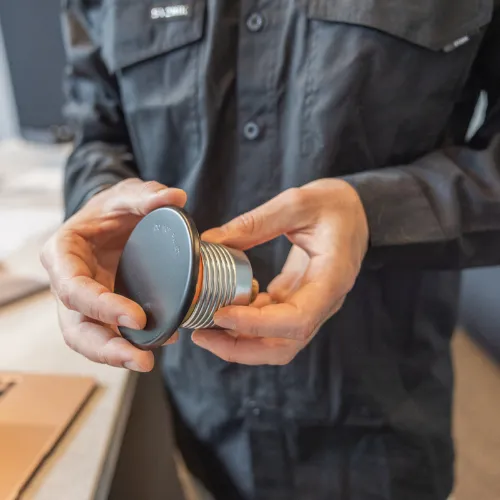Commercial Projects
Fire Safety Engineered by Excellence
We offer a high quality end to end service which enables us to give commercial spaces the ultimate protection from internal fires.
What we do
Designer Fire Sprinklers offers Wet Fire Services.
Wet fire services refers to the installation, maintenance and management of fire protection systems that utilise water as the primary extinguishing agent.
We have strong partnerships with businesses whom offer dry fire services, which refers to the installation, maintenance and management of fire indicator panels, alarm signalling equipment, smoke detectors and occupant warning systems.
If your job requires both wet and dry fire services, that is something Designer Fire Sprinklers can accommodate with our strong industry relationships.

Our Process

System Development & Modifications
Compliance with all relevant Australian Standards
We ensure that every aspect of our process meets or exceeds the requirements set forth by Australian building and fire safety standards. This includes adherence to codes regarding materials used, installation practices and safety measures.
Fire Sprinkler System Design
We develop comprehensive designs that provide complete coverage both above and below the ceiling, tailored to the specific needs of the building.
Hydraulic Calculations
Our process involves conducting detailed hydraulic analyses to ensure that our fire protection systems—including sprinklers, hydrants, and hose reels—deliver sufficient water flow and pressure effectively to all components.
Shop Drawings
We’ll prepare precise shop drawings that detail the layout and specifications of the fire sprinkler system. These are essential for the installation process and help in coordinating other trade services.
System Installation
Installation of High Quality Components
The following fire safety equipment is commonly included in commercial projects, though not all components are installed in every case:
Sprinkler heads
Fire Extinguishers
Fire Blankets
Fire Hydrants
Fire Hose Reels
Fire Pumps
Fire Tanks


Documentation & Certification
As-Installed Drawings
Upon completion of the system’s installation, finalised drawings are provided to reflect the actual setup.
Maintenance Manual
A comprehensive maintenance manual is created to guide the operation, inspection and maintenance of the installed system.
Block Plan
The block plan is prepared or updated to show an overview of the installation, highlighting crucial elements. This is vital for emergency services, providing quick access to critical information during emergencies.
Independent Certification
The installation undergoes independent certification to verify compliance with all applicable fire safety standards and building codes.
Completion Certificates
Upon successful installation and inspection, completion certificates are issued by our VBA Licensed Sprinkler Fitter.
Testing, Commissioning & Warranty
Testing and Commissioning
We conduct a comprehensive evaluation of all installed fire safety equipment to ensure each component functions according to the system’s design specifications. We adjust settings, calibrate instruments and troubleshoot any discrepancies to guarantee system reliability and effectiveness.
Defect and Liability Period
After the completion of the installation and initial testing, we offer a 12-month defect and liability period. This covers all parts and labour associated with the repair or replacement of any components that fail.
Compliance Testing (AS 1851-2012)
To adhere to the AS 1851-2012 standard which outlines the routine service of fire protection systems and equipment, we conduct monthly compliance testing for the first year following the system’s installation.


Operational Provisions
System Drain Downs and Isolations
To ensure safe modifications or repairs to the sprinkler systems, executing drain downs and isolations is a critical procedure. This involves systematically shutting off and draining the water or extinguishing agents from specific sections of the fire suppression system, allowing our team to safely perform maintenance or upgrades without accidentally triggering the system.
Coordination with Other Trades
Effective collaboration with other on-site trades is essential for the seamless integration of fire safety systems within the broader scope of construction or renovation projects. Our team actively coordinates with:
Electrical;
Plumbing;
Dry fire;
HVAC; and
Structural professionals.
Day and Night Work Allowance
Recognising the diverse demands of construction and retrofit projects, we allocate resources for both day and night shifts as required by the site schedule.
Frequently Asked Questions
Are residential sprinklers the same as bushfire sprinklers?
No, residential fire sprinklers and bushfire sprinklers serve different purposes and are designed differently to meet those needs.
Residential fire sprinklers are installed inside homes and buildings to protect against fires that occur within the structure. They are designed to activate at high temperatures that are typical of indoor fires, rapidly discharging water over a specific area to suppress the fire and prevent its spread.
Bushfire sprinklers, on the other hand, are designed for external use to protect properties from wildfires. These systems are often more robust and designed to cover a larger area to combat the intense heat and potentially large embers from approaching bushfires.
What are the benefits of installing a residential fire sprinkler system?
Installing a residential fire sprinkler system greatly enhances safety by automatically detecting and controlling fires, often extinguishing them before emergency services arrive. This can significantly reduce property damage and increase survival rates during a fire. Additionally, homeowners may benefit from lower insurance premiums due to the decreased risk of extensive fire damage.
How do the sprinkler systems work?
The sprinkler heads are designed to activate when they reach a temperature of 68°C. Each sprinkler head operates independently, releasing water only in the area where the heat is detected. This targeted response not only helps in controlling the fire quickly but also minimises water damage.
Can a sprinkler system be installed in an existing home, or just new homes?
Fire sprinkler systems can be installed in both new constructions and existing homes!
While it is easier and less costly to install during construction, retrofitting an existing home is entirely feasible. Retrofit installations may require some temporary disruption to home life, as ceilings and walls may need to be accessed to install pipes and sprinkler heads.
How much maintenance do residential fire sprinkler systems require?
We recommend that individuals get their sprinkler system maintained and checked over once every 6 months. This will allow us to ensure the system functions properly and complies with all safety standards.

